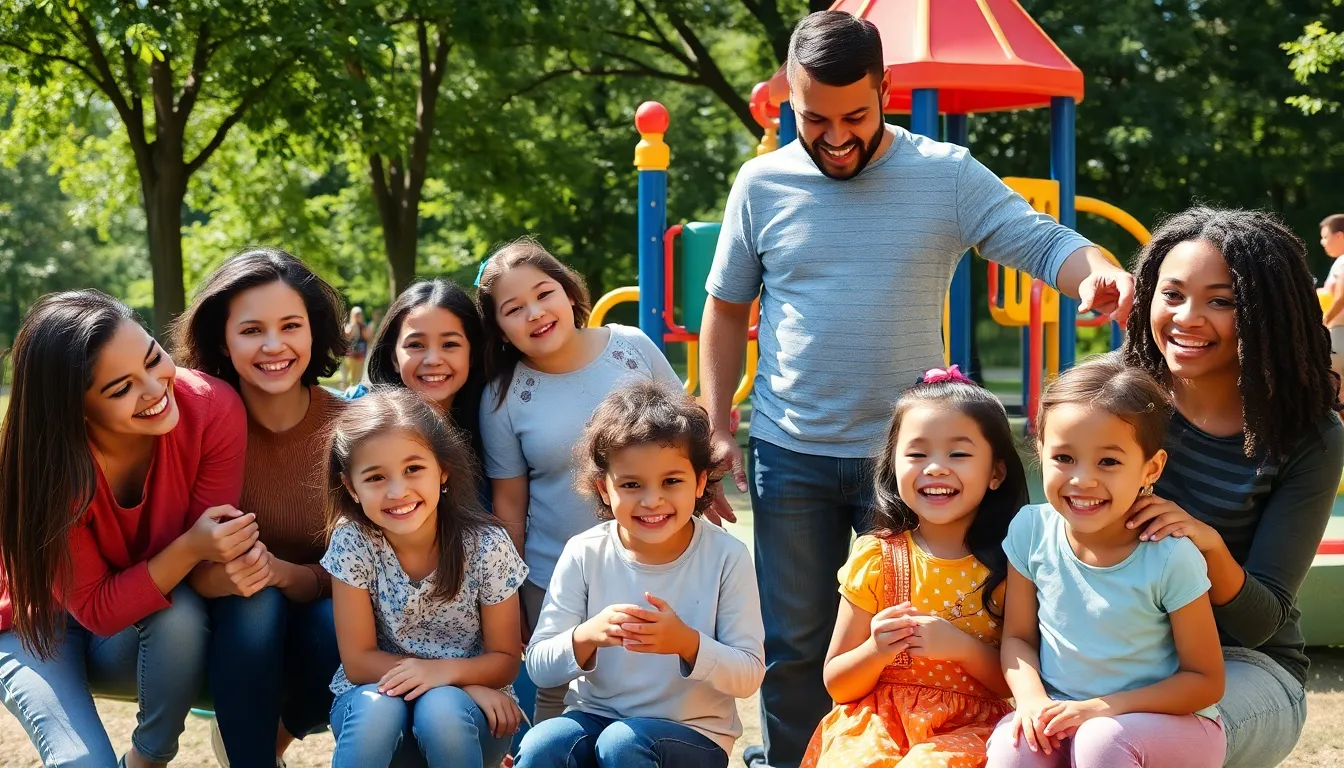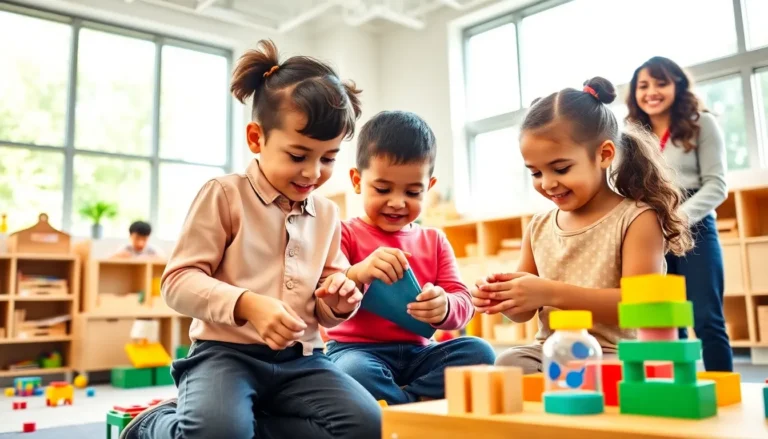Fostering and adoption—two heartwarming journeys that transform lives and create families. Imagine opening your home to a child in need, offering them not just a roof but a safe haven filled with love, laughter, and maybe a few too many snacks. It’s a rewarding experience that not only changes the child’s life but enriches the lives of everyone involved.
Table of Contents
ToggleUnderstanding Fostering And Adoption
Fostering provides temporary care for children unable to live with their biological families. It aims to ensure safety and stability until children can return home or find a permanent solution. Families interested in fostering must undergo rigorous screening processes to ensure they can provide a nurturing environment.
Adoption, on the other hand, offers a more permanent arrangement. It legally transfers parental rights to adoptive parents, giving children a chance to grow in a stable and loving home. This process typically involves matching children with families and considering the unique needs of each child.
Both options play crucial roles in child welfare systems. According to the U.S. Department of Health and Human Services, over 400,000 children are currently in foster care, with significant numbers waiting for adoption. Each child’s situation is assessed carefully, ensuring that decisions prioritize their best interests.
States develop diverse adoption and fostering programs to align with community needs. Agencies often provide resources to support families through this journey. These resources include training, counseling, and financial assistance for both foster and adoptive parents.
Understanding the differences between fostering and adoption helps potential caregivers make informed choices. Each path presents distinct challenges and rewards. By engaging in fostering or adoption, families contribute to the betterment of children’s lives, making a long-lasting impact on their futures.
The Importance Of Fostering And Adoption

Fostering and adoption play crucial roles in supporting children and families. Both processes create opportunities for stability, love, and growth.
Benefits To Children
Children experience numerous benefits through fostering and adoption. They gain access to safe, nurturing environments essential for emotional and physical development. Stability in a foster or adoptive home provides a sense of belonging that allows children to thrive. Resources such as educational support and mental health services often become available, enhancing their well-being. The presence of caring adults fosters positive relationships, contributing to a child’s self-esteem and resilience. According to data, over 400,000 children await permanent placements in foster care, highlighting the urgent need for loving families. Prioritizing the wellbeing of these children leads to brighter futures.
Benefits To Families
Families also gain significant advantages from fostering and adopting. They experience the joy of nurturing a child and the deep connection that develops. Additionally, fostering or adopting often brings families closer together as they navigate challenges and celebrate achievements. Access to training and resources equips families with skills to support children effectively. Financial assistance further alleviates pressures, making the process more manageable. Data indicates that fostering and adoption not only benefit children but also enrich family dynamics. Families that choose this path create lasting memories and contribute to community development, making a positive impact on society as a whole.
The Fostering Process
The fostering process involves several essential steps that potential caregivers must follow to provide a safe environment for children in need.
Steps To Become A Foster Parent
Becoming a foster parent starts with researching state requirements. Local agencies provide extensive information on eligibility criteria. Completing a thorough application process follows, which may include background checks, references, and interviews. Potential caregivers attend training sessions that cover child development, attachment theory, and trauma-informed care. Lastly, home studies evaluate the suitability of the applicant’s living environment. Successful completion of these steps leads to a foster care license, enabling caregivers to welcome children into their homes.
Challenges In Fostering
Fostering presents unique challenges that caregivers must navigate. Emotional strain often arises from the attachment developed with children who may leave after placement. Dealing with behavioral issues linked to trauma can become overwhelming for parents. Coordinating with caseworkers, therapists, and birth families adds additional complexity to the process. Furthermore, fostering may require flexibility in schedules to accommodate court dates and family visits, often creating extra demands on time. Support networks play a crucial role in helping foster parents manage these challenges effectively.
The Adoption Journey
The adoption journey involves several steps and considerations, shaping the lives of children and adoptive families. Various types of adoption exist, each catering to specific needs.
Types Of Adoption
Domestic adoption involves placing a child with adoptive parents within the same country. In comparison, international adoption connects children from one country with families from another. Another option is foster adoption, where a child in the foster care system transitions to permanent placement. Kinship adoption occurs when relatives, such as grandparents or aunts, adopt a child. Each type of adoption presents unique processes, circumstances, and emotional aspects, impacting families and children differently.
Legal Considerations In Adoption
Legal considerations encompass essential aspects vital for a successful adoption process. Potential adoptive parents must undergo background checks to assess their suitability. Adoption agencies require home studies, ensuring that living environments meet safety standards. Filing legal paperwork becomes crucial for finalizing the adoption, including consent from biological parents when relevant. Adhering to state laws and regulations is necessary to navigate timelines and procedures effectively. Understanding these legal elements helps families prepare for the commitment involved in adopting a child and facilitates smooth transitions.
Support Systems For Foster And Adoptive Families
Support systems play a crucial role in the lives of foster and adoptive families. Many states offer dedicated programs that provide training, counseling, and financial assistance tailored to the unique needs of these families. Access to these resources enhances the ability of caregivers to create nurturing environments for children.
Training opportunities equip families with skills to manage behavioral challenges and emotional needs. Workshops and seminars teach effective parenting strategies, trauma-informed care, and behavioral management techniques. Obtaining knowledge from experienced professionals helps caregivers navigate the complexities of fostering and adoption.
Counseling services offer emotional support for families during challenging times. Connecting with counselors experienced in child development and family dynamics can be invaluable. Such professionals assist families in processing their emotions and provide guidance on relationship-building with their children.
Financial assistance is available to lighten the economic burden often associated with fostering and adopting. Monthly stipends help cover children’s basic needs, such as food, clothing, and education. Additional funds can support medical, psychological, and academic expenses, easing the adjustment for families.
Peer support groups connect foster and adoptive families, fostering a sense of community. Sharing experiences with others facing similar challenges validates feelings and offers practical advice. Regular meetings allow families to celebrate milestones and provide encouragement during difficult times.
Accessing legal resources proves essential for navigating the adoption process. Legal aid organizations assist families with necessary paperwork and court procedures. Engaging legal experts helps families ensure that they comply with all requirements for a successful adoption.
Ultimately, comprehensive support systems empower foster and adoptive families. They strengthen relationships, enhance resilience, and promote the well-being of children in these care arrangements. Prioritizing these systems increases the chances of successful placements and lifelong bonds.
Fostering and adoption represent powerful avenues for creating change in the lives of children and families. By offering love and stability to those in need, caregivers not only transform individual lives but also contribute to the well-being of their communities.
The journey may come with challenges but the rewards are immeasurable. Support systems play a crucial role in this process, equipping families to navigate complexities while fostering meaningful connections.
Ultimately, the commitment to foster or adopt is a profound act of compassion that enriches both the caregiver and the child, reinforcing the importance of nurturing relationships and fostering growth.




